-
Posts
190 -
Joined
-
Last visited
-
Days Won
2
Content Type
Profiles
Forums
Blogs
Gallery
Events
Store
Posts posted by Matthew Macleod
-
-
-
That is an imposing design as well. I think I have seen that model utilized for different festivities. Apparently it wasn't an uncommon practice back then- the company that originally introduced the piece retained their rights to the initial design that was utilized for different meetings in the future- it's what happened with Gau Ost Hannover badge (which also, coincidentally, helped determine their maker).
I'll see if I can find the piece I am talking about in my files although it might take a bit.
Meantime- one more Gau badge that became a 'poster child' for the Gau badges in general (no pun intended). Classic design- wreath denoting Victory, swastika, denoting those who took it, and a little snobistic touch in the center for those who did not recognize the piece on the wearer's uniform. Whichever variety it was- It said all that needed to be said.
0 -
-
West German Customs Service set. This one is that of a Zollwachmeister rank.
0 -
Splendid duo. Thanks for sharing.
I can see why some favor F.W. Assmann. Starting out in 1826, he was one of the pioneers in the industry where very few existing companies thrived & survived and even fewer decided to start up. Ole Friedrich Wilhelm (and his son Eugene of course) certainly left a legacy doing what they did best. Their company survived for almost 200 years and their quality never faded. That says something about their way of doing things.
Their old buildings were torn down not too long ago. When they were still intact, there was an handsome, cast iron plaque with their name and logo on it. Someone tried to remove it at some point but the old bugger proved to be too much hassle and although it got a little bent and scratched, it never came lose.
I wonder what became of that plaque now that the buildings have been demolished..
0 -
Here's my duo. The one on the right is the silver (participants) version. The yellow color encompassing most of the obverse is a sealing agent that turned yellow over the last 80 odd years. A feature that is missing from the badge's verso.
The other one is the bronze spectators version. Both are tombak based judging by their weight.
0 -
By the time those badges were being boxed up for delivery , there were very few veteran workers at the famous factory. It's been said that prior to 1933, even as big as they were at the time, most of their products were made to order from different countries, mostly South America but also Scandinavia and Holland. The year 1933 and the new Regime brought CEJ along with other medal makers another lease on professional existence since very little was produced prior to that time, for German market anyways.
Post 1933, Juncker had to expand their existing staff to about 300% just to be able to keep up with the production demands. It truly became a conglomerate. Most long-time workers were delegated to overseeing positions with junior associates taking over most of the 'hands-on' machine duties but few remained, mostly where it was necessary to operate machines and use their specialized handiwork.On to quality control of course. It wasn't uncommon to see artisans who were there for 40 or 50 years. Those were the ones that over time became the heart and soul of that factory. Their skills can still be observed today, through their products, long after they're gone. Over times the materials became little less fancy due to the constraints of the times but the production techniques continued to be a benchmark of the entire industry, for years, even after the guns fell silent in 1945.
Nice badges & thanks for showing- always happy to see something from my favorite maker.
0 -
I don't think it cupal we're looking at.
As we know cupal is a fusion between aluminum and copper, sometimes incorrectly referred to as "copper plated aluminum". It's not plated, the two layers are fused together as layers/sheets.
In the case of your badges, we can't see the line where the top (copper) layer ends and aluminum base begins as we do on other, cupal based pieces. Furthermore- judging by the pic of the sheared edge on the bronze piece, particularly the cross guard part- we see what appears to be either spots of rust or exposed bronze layer. Since aluminum does not rust (it oxidizes), it's either exposed bronze base material we see or a bronze plating undercoat on a straight aluminum badge. Whatever the case, it would not be present on a cupal piece (why copper plate cupal badge?)
My opinion only, of course.
It might help to determine what the base materials are by comparing the weight of the piece with another known specimen.
0 -
Yes, was hoping for exactly that- a view of the sheared edges if possible.
thanks,
0 -
Congrats on your new acquisitions. Can we see a pic of a cross-cut section of those?
0 -
-
-
-
-
-
It's a copy of a Schickle cross unfortunately.
0 -
Eclectic display of a focused collection. Passion and pride are evident.
Congrats.
0 -
I think that's the "Frw. Legion Nederland(e) cufftitle so I would have to agree with your assessment.
0 -
It's a post war reproduction medal based on the original S&L design. It is quite possible that it was produced by S&L but there are certain characteristics that exclude this one (and few like it) from their pre-war time, war time and even the famous 'barter-boards' line up.
Here's another one like it. The owner is convinced it is an original (it's not). Picture courtesy I. Hulley
0 -
It's a Kriegsmarine honor pin given out for merit in the field of military support (Kriegsmarine Ehrennadel für Verdienste auf dem Gebiet der Wehrbetreuung).
0 -
The tinnie from post #43 (Gautag Osthannover 1933) is a post war Souval reproduction.
0 -
-
-
Is there a list or a publication showing KdF membership badges from various Gaue (as opposed to KdF festabzeichen) that anyone knows of?
Thanks in advance.
0






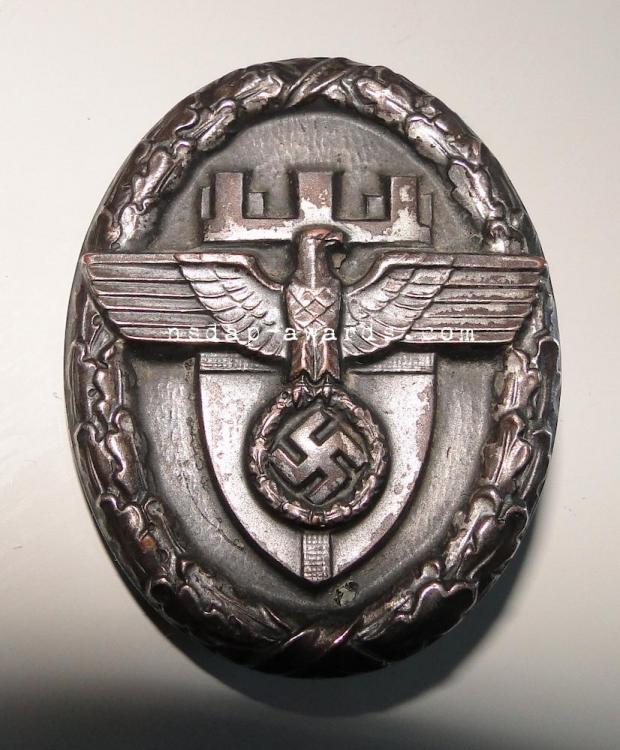
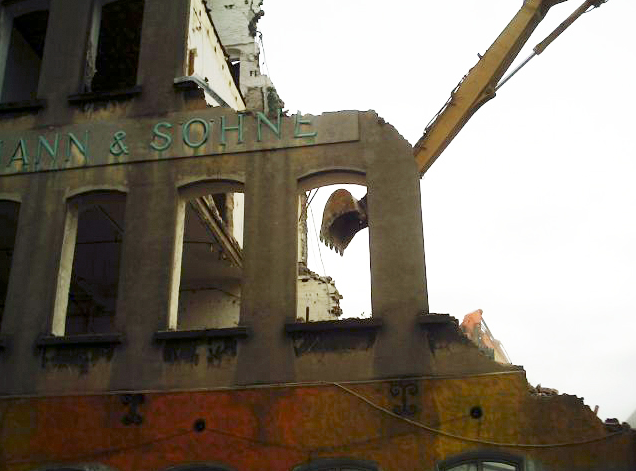
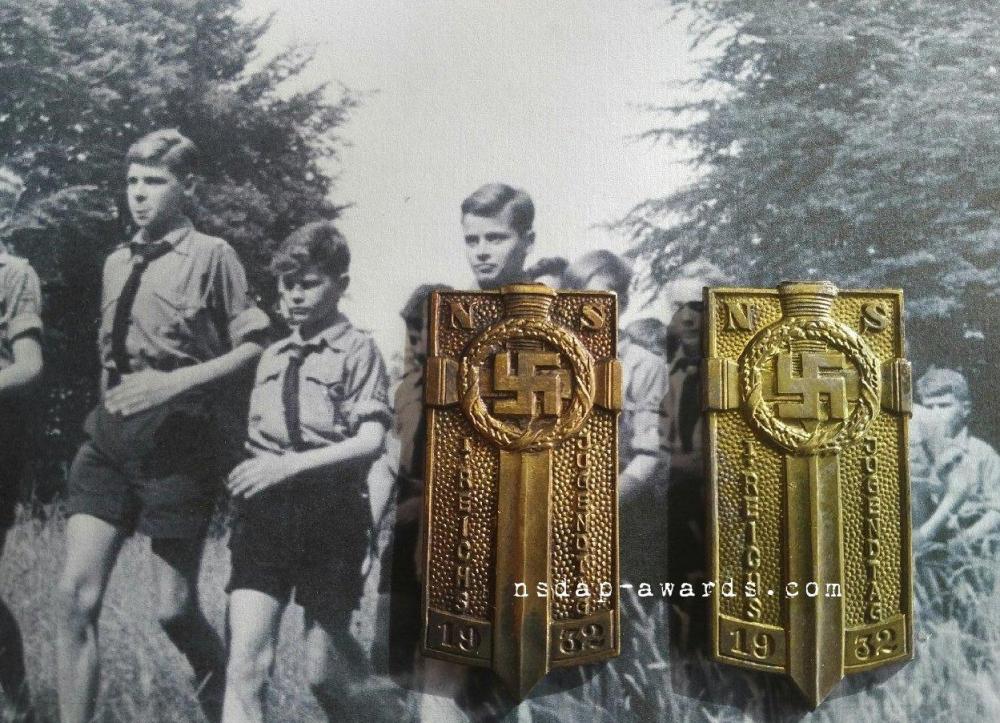
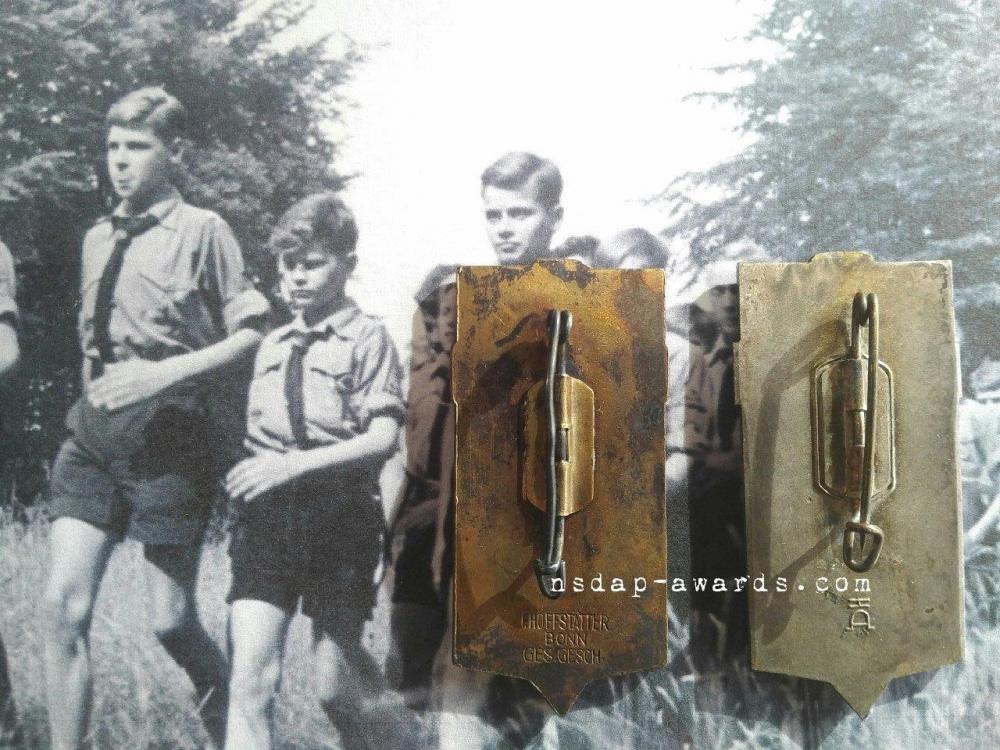
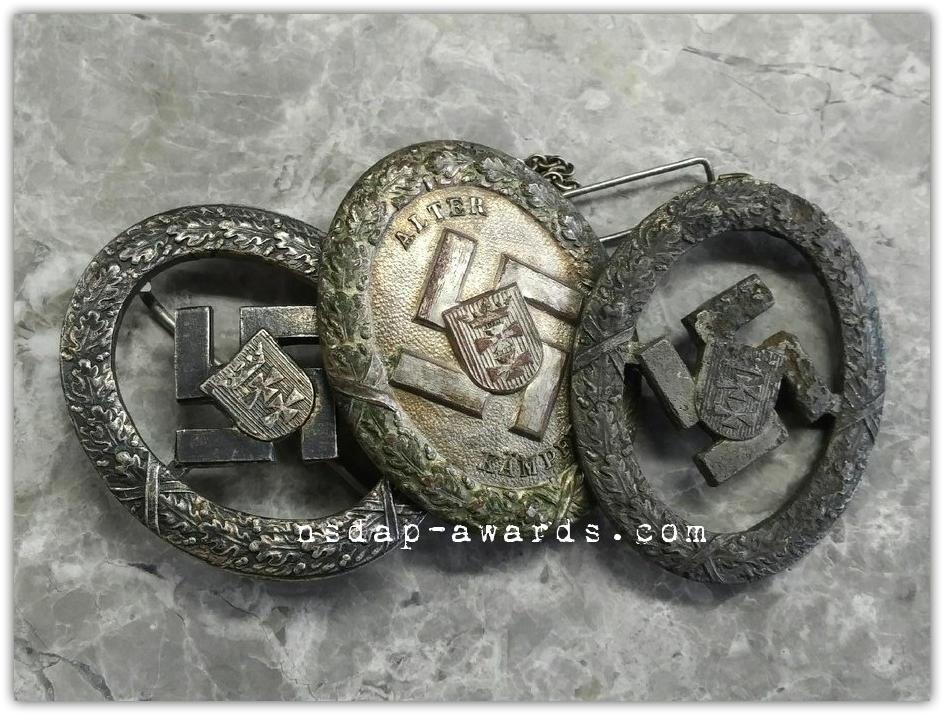
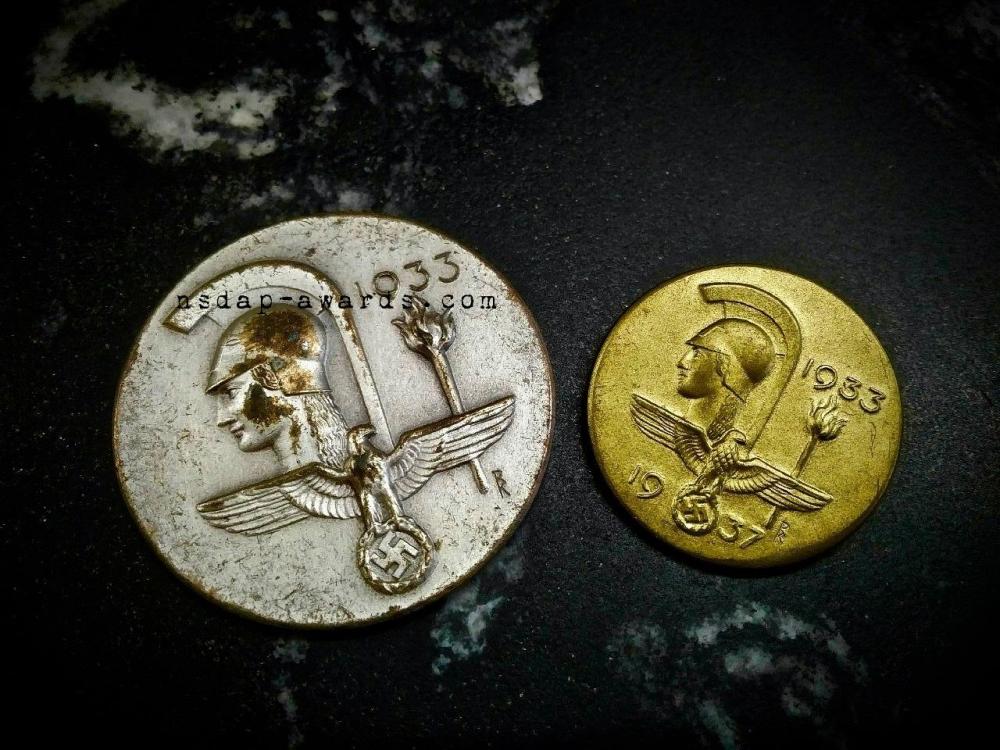
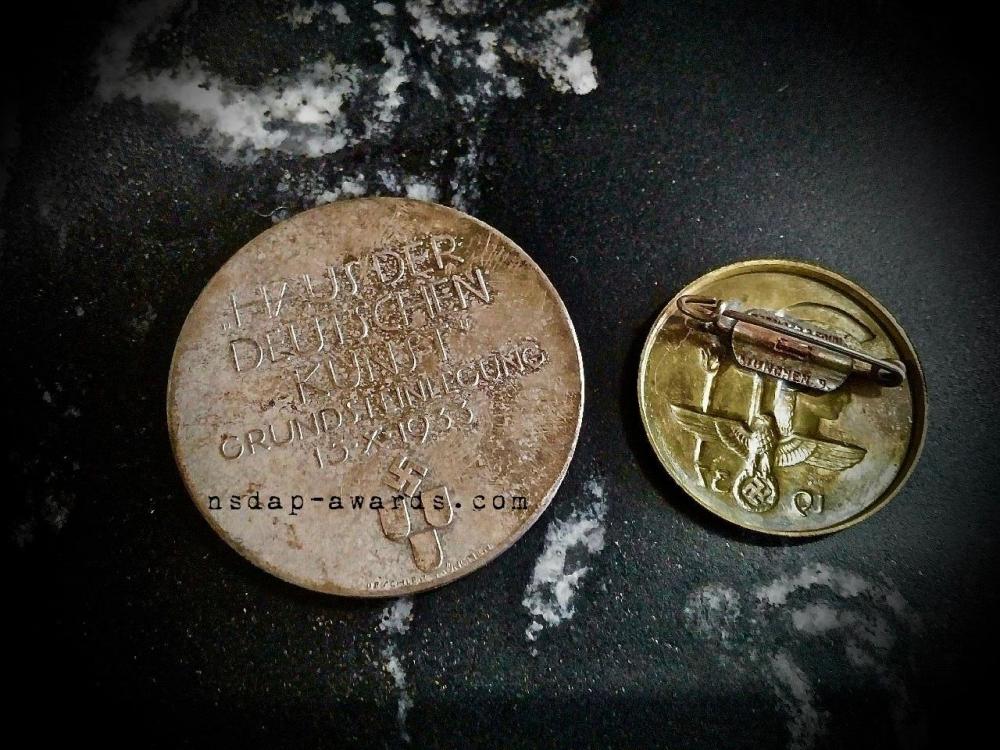
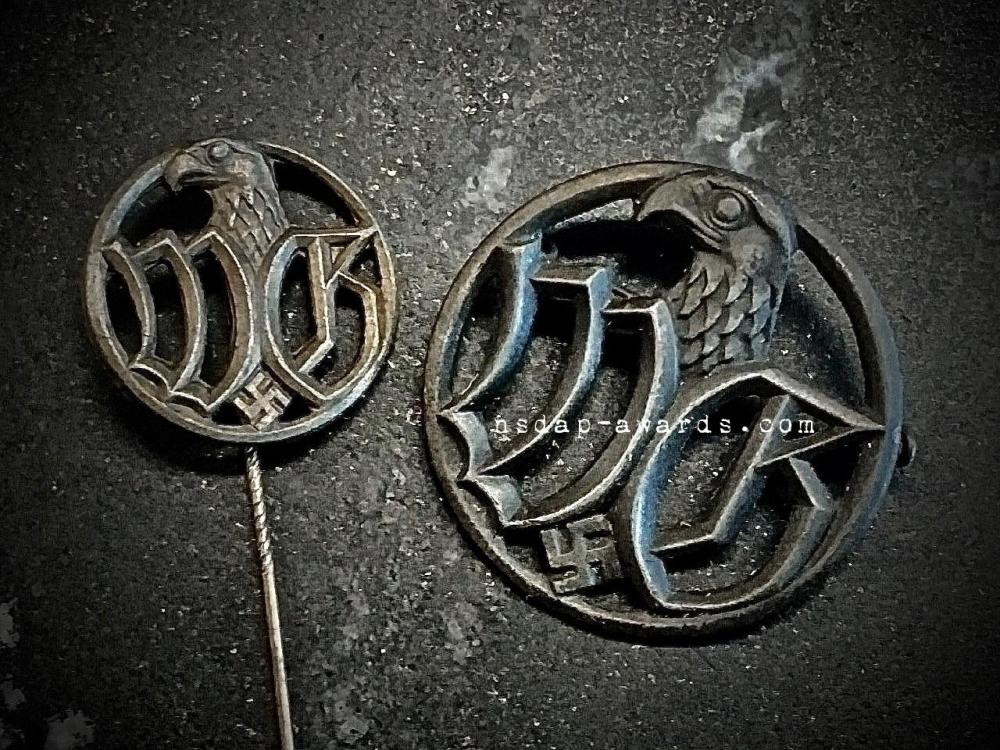

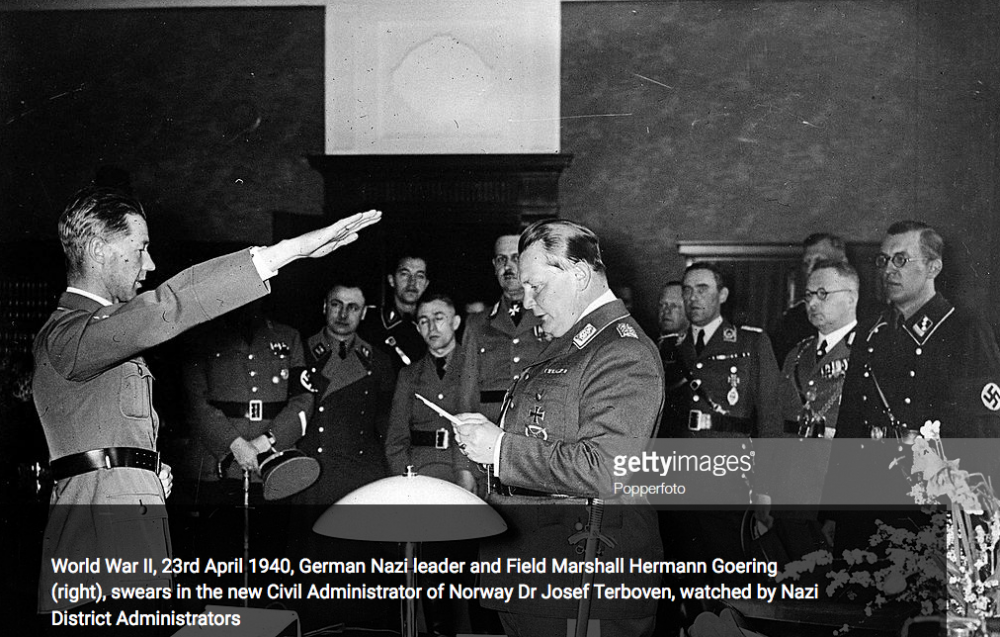
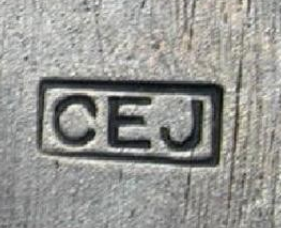
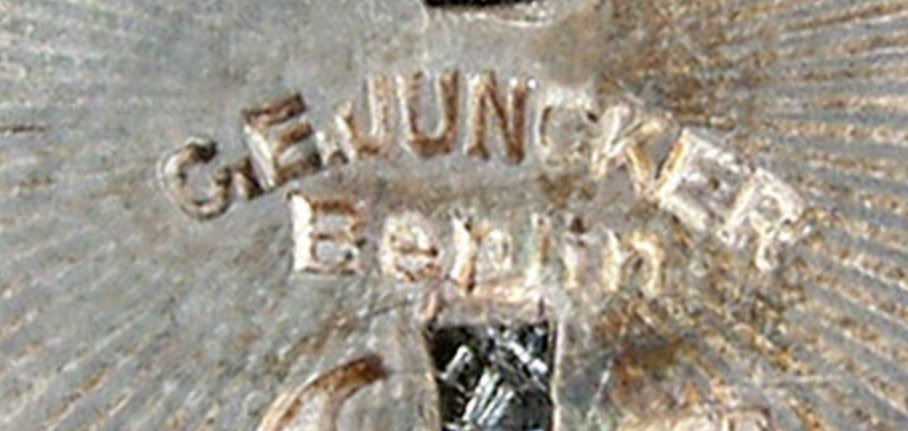
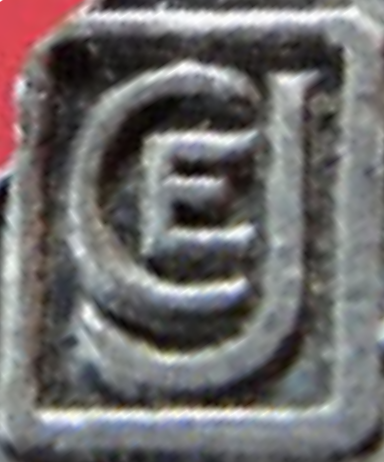


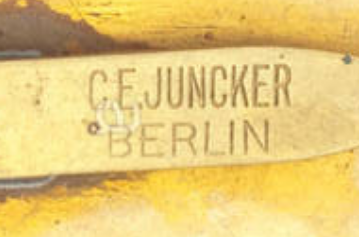
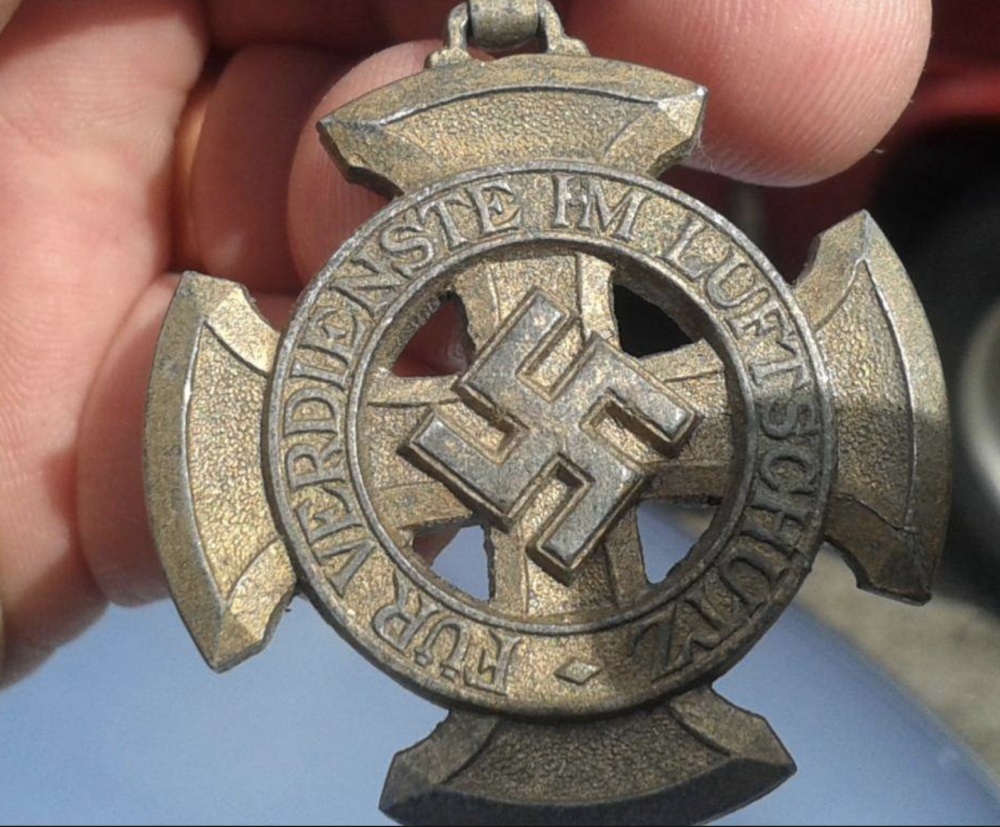


Non-combatant bars are difficult to find!
in Germany: Imperial: The Orders, Decorations and Medals of The Imperial German States
Posted
Single one. The stickpin is an eagle cut out of a coin.